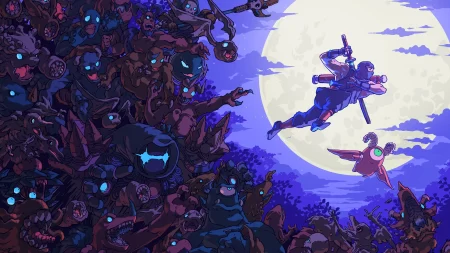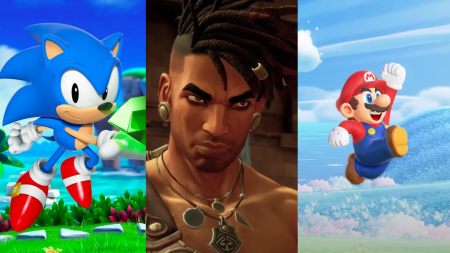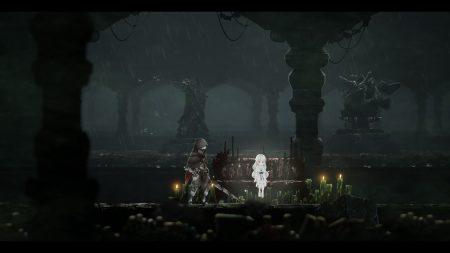The fact that any video game exists in 2024 is an absolute triumph. Given the rising costs of development, fear of industry consolidation, and near-constant downsizing, any game that makes it to market is an achievement. This goes doubly for smaller games, even small projects from large publishers. Why waste time and resources, one might think, on a product that may not capture widespread attention when you can make something for mass audiences?
Amid this turbulence comes Prince of Persia: The Lost Crown, a game that left me in wonder at every turn. The first console game in the storied Prince of Persia franchise since 2010’s The Forgotten Sands, The Lost Crown breaks away from what made the mid-2000s Sands of Time subseries successful to re-explore its deepest roots. Gone is the 3D action, replaced instead with the 2D side-scrolling reminiscent of Jordan Mechner’s original 1989 Prince of Persia. In essence, one nostalgia is traded for another.
Its origins may be nostalgia-based, but The Lost Crown drives the Metroidvania genre forward in unique and complex ways. With every new item, mechanic, and environment, I was left agape at the game’s mysteries and wonder. The Lost Crown was an absolute joy to play, and left me with only one question: How in the world did this game get made?
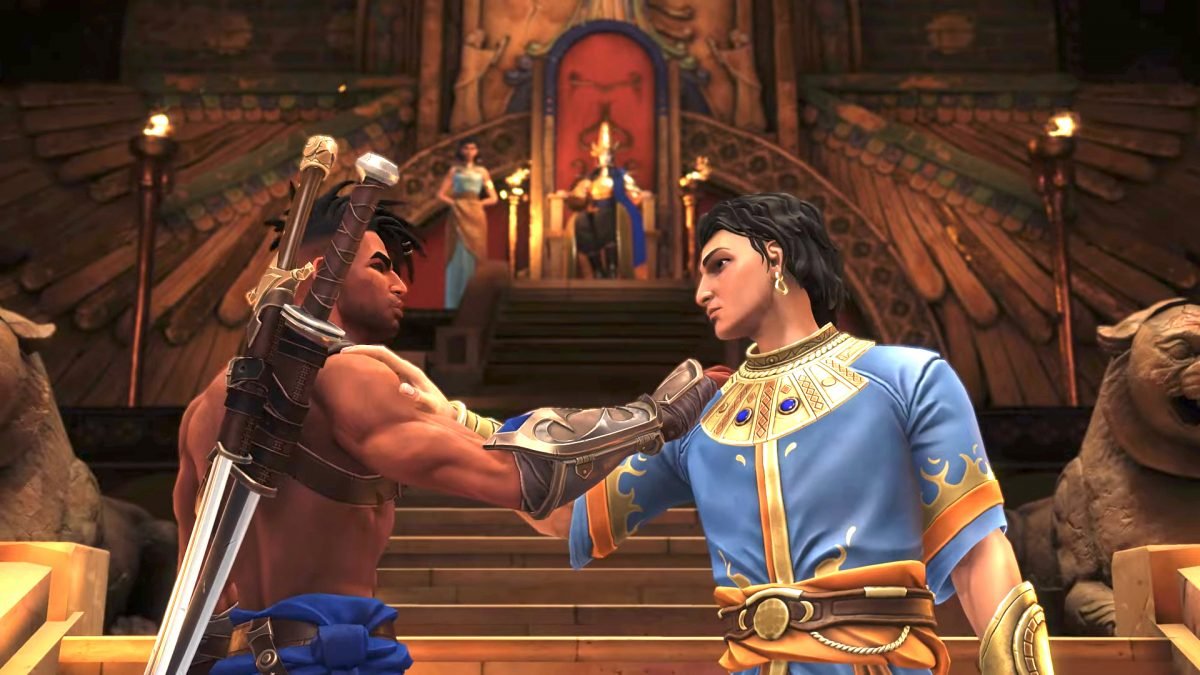
What Is a King to a God?
You play as Sargon, the youngest of Persia’s seven Immortals: warriors who can capture the essence of their fighting spirits (called Athra) and call upon them to their aid. Led by Varham, Persia’s “White Lion,” the Immortals are the last hope of a dying country. Famine, drought, and invading neighbors have pushed Persia into its final days. After repelling the most recent incursion, Queen Thomyris’ son, Prince Ghassan, is kidnapped from within the kingdom. The Immortals are tasked with chasing the kidnappers to Mount Qaf, the former home of the Persian Kingdom that fell to ruin 30 years prior.
What follows is a simple but engaging narrative of betrayal, mistakes, and growth. Though I would not call The Lost Crown’s story revolutionary, the ups and downs certainly hold weight. Sargon in particular is a highlight: a flawed but captivating character who carries the story with aplomb. I found myself easily rooting for him and genuinely touched by where some of the narrative beats go. He’s a likable guy who has been dealt a rough hand and hefts the burden of his choices exceptionally well.
With this being a reboot of the series (technically the franchise’s fourth!), The Lost Crown certainly leaves some threads hanging for future adventures with Sargon and the Immortals. And yet, I would also be happy if this stood alone in the series—a fun foray into a new universe, with gameplay elements to be carried forward.
Speaking of gameplay…
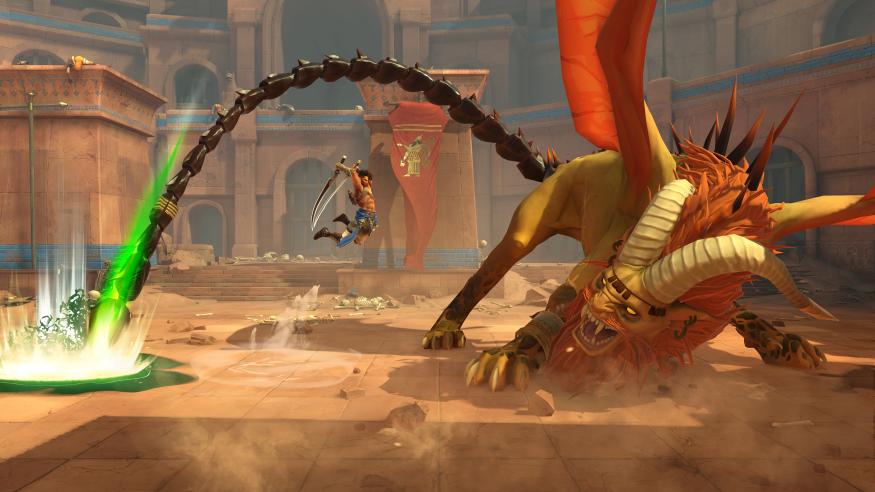
What Lies at the End of Your Blade?
The Lost Crown holds its Metroidvania DNA close to its heart. Gameplay revolves around a familiar loop: Follow enemies to your next destination, discover corners of your map that you can’t access until you receive new mechanics, and experiment with difficult platforming sections.
While these tropes may be familiar, the core action itself is a delight. Combat is both simple and intricate, with sword attacks dedicated to a single button. While this may sound boring, the inclusion of fighting game-esque commands—executed by moving the joystick to different positions—adds a layer of complexity that allows players to tackle combat how they feel best. Encounter a group of light enemies? Hit them with an air launcher and combo them until they explode. Fighting a mob with shields? Hop above them to strike their backs, then weave in some charged attacks to break their shields. Staring down a big (and I mean BIG) guy? Dodge, parry, and dance with light attacks to whittle their health away before hitting that big finish.
Adding to this system are powerful attacks called Athra Surges, as well as a simple parry system. Enemies have three forms of attack, which players can respond to in different ways. White attacks can be interrupted or parried to gain an advantage. Yellow attacks can only be parried, but open up enemies to a devastating finisher move if executed correctly. Finally, red attacks cannot be interrupted or parried, and have to be dodged or stopped with an Athra Surge. On top of that, if the player attempts a parry but misses the timing window, Sargon is hit with a punishing counter that takes off huge chunks of your health bar. Health itself is at a premium, so these counters are exceptionally difficult to recover from. Timing is everything!
In my playthrough, I found nine different Surges all with different effects. I found myself using a one-cost Surge that shot a large cross-shaped projectile, as well as a three-cost Surge that enhanced Sargon’s abilities, improving his dodge and damage. And your experience will likely vary! The Lost Crown encourages players to mess with their builds through the use of accessories called Amulets. Amulets can do everything from extending combo strings and making parries easier to providing extra health (always a boon!). The game also has an in-depth training mode I highly recommend experimenting with. Depth is everywhere, just waiting to be discovered.

Hidden Depth—Literally!
Speaking of depth perception, the platforming in The Lost Crown can be exceptionally tricky. I spent hours on certain puzzles, timing my jumps, air-stalls, dodges, and every other movement option available, just so I could collect small bits of upgrade material. But, my word, was every second fun. The Lost Crown may be difficult, but it also elicits joy through a sense of achievement that is hard to rival.
As Sargon gains additional mobility options, he’s able to access more of the game’s world map. In typical Metroidvania fashion, you’ll find yourself revisiting old locations just to check that one hallway you couldn’t reach before, or making note of sections to return to. Thankfully, the process is surprisingly simple. In what is easily the most clever innovation in the genre in years, The Lost Crown implements a single-button screenshot system. By tapping down on the D-Pad, you can snap an image of what you are looking at and add it to your map. Gone are the days of memorizing exactly where that inaccessible chest is; now, you can easily go back and nab it.
For players who want to experience the game but aren’t too keen on figuring out exactly where to go on the large map, fear not! The Lost Crown offers a Guided Mode that adds icons and direction markers toward important locations. While the default Exploration Mode is great for players who want to get lost in the world, Guided Mode is fantastic for folks who just want to know where to go next. And though you’ll still need to be precise with your jumps, you’ll be able to avoid the occasional frustrations of trying a hard section for an hour only to find a chest with money at the end instead of the path forward.
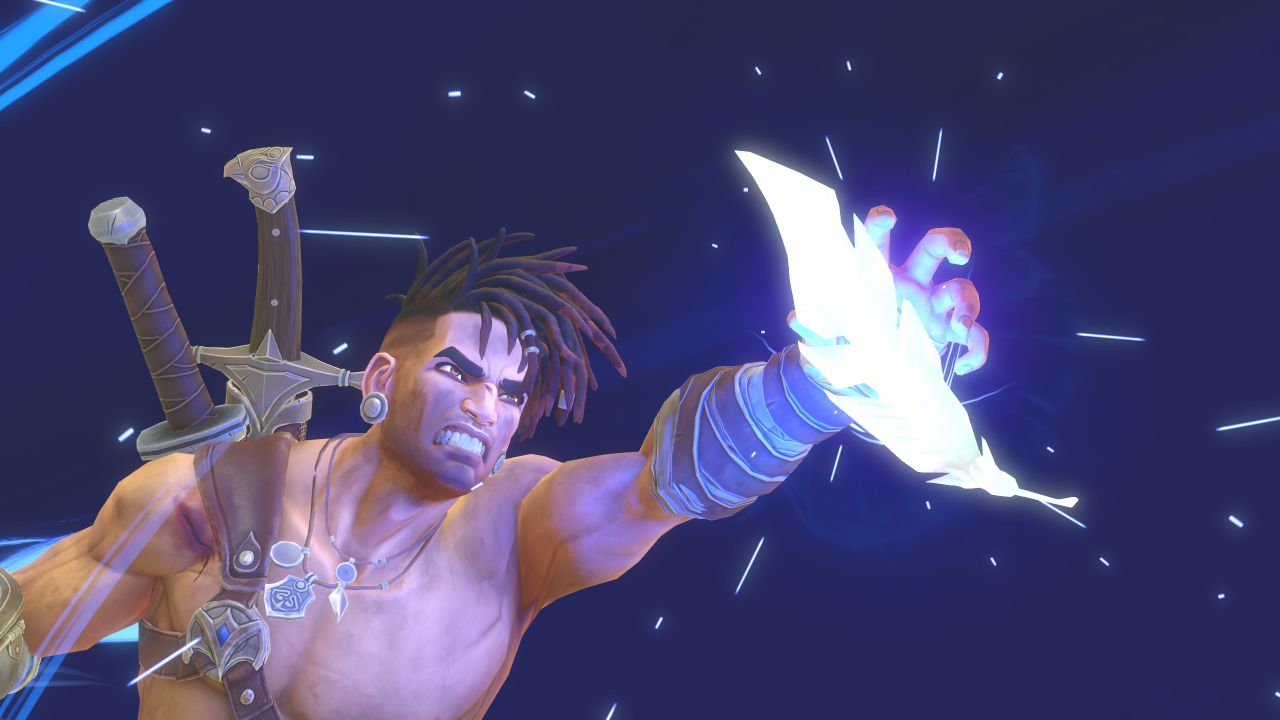
The Sands of Time
Over and over again, I was struck by how beautiful The Lost Crown looks in motion. The color palette helps enemies and platforms pop, with clever tones that add depth to backgrounds. The vistas themselves are breathtaking, with environments ranging from lush jungles to damp caves to desert vistas. Even cooler, each environment makes logical sense within the broader world, blending seamlessly from locale to locale. Mount Qaf in particular is a dynamic, shifting, striking space.
The score is captivating as well, nicely complementing the different aesthetics of each environment while remaining enjoyable on repeat listens. After all, if you’re trying a spike puzzle for an hour, you don’t want the score to be too repetitive or intrusive.
Everything in The Lost Crown seems to guide players toward a state of flow. The music moves with Sargon, highlighting important moments but also fading to the background when needed. I even wrote this entire review with the score as my backdrop; it’s perfect for getting into the zone.

At the End, or the Beginning?
The Lost Crown isn’t a perfect game. Quests can be buggy, graphical errors pop up now and then, and you may find yourself fighting to jump in the right direction. Overall, however, it’s a magnificent package that’s well worth your time.
Sargon’s journey was a joy to experience, and I will long remember the elation from nailing a hard puzzle. What could have been a simple odd project from Ubisoft is instead both a love letter to a beloved genre and a wonderful next step for Prince of Persia.
My only hope is that you can love the exploration and journey as much as I did.
Score: 9.4/10
Gary is a jack-of-all-trades video game enthusiast based in Boston, MA. A semi-professional fighting game player, even less professional Apex Legends player, and even less professional adult, he spends most of his time poking at strange indie gems and reading about the need for more diverse voices in gaming criticism. He invites anyone to recommend anything he's missed in the gaming world via Twitter or BlueSky, where he can found under the username @grtnpwrfl. When he isn't spending his time playing games, Gary is an avid New England Patriots fan and frequent hiker.








